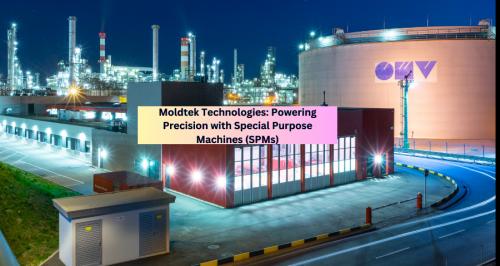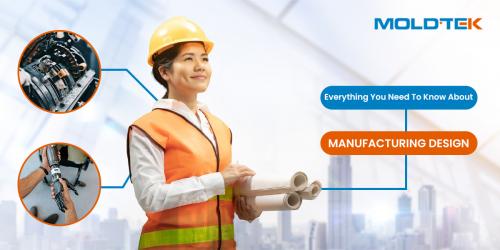Moldtek Technologies: The Architects of Precision - Special Purpose Machines (SPMs) Take Center Stag

Moldtek Technologies isn't just a name in plastic manufacturing; it's synonymous with intricate designs and unparalleled quality. But what's the secret sauce behind their success? How do they achieve such precision and efficiency, especially when dealing with complex components? The answer lies in a powerful arsenal of tools known as Special Purpose Machines (SPMs).
SPMs: Custom-Built for Unparalleled Performance
Unlike their general-purpose counterparts designed to be jacks-of-all-trades, SPMs are the Michelangelos of the machine world. These are custom-built machines, meticulously crafted for a single, specific function. Imagine an SPM designed solely for the intricate assembly of a miniature gear system. This specialized machine will perform the task flawlessly and significantly faster compared to a general-purpose machine juggling multiple functions.
The Moldtek Advantage: Beyond Efficiency
SPMs offer a multitude of benefits that empower Moldtek's production process, making them a strategic investment that goes beyond just efficiency:
- Unmatched Quality Control: SPMs are designed with laser focus, ensuring every movement, grip, and assembly step is programmed with precision. This meticulous approach minimizes defects and ensures consistent production of high-quality parts. Less rework, less waste, and a higher yield of perfect parts – that's a recipe for success for Moldtek.
- Reliable Production - A Workhorse You Can Trust: Once an SPM is calibrated and running, it becomes the epitome of reliability. It consistently produces parts exactly as specified, every single time. This eliminates inconsistencies in production and ensures a smooth flow of high-quality products. This reliability also reduces downtime and maintenance costs.
- Scalability and Adaptability: While custom-designed, SPMs can often be adapted to accommodate slight variations in parts or production processes. This allows Moldtek to leverage their SPM investment for future projects with similar requirements. They can potentially modify tooling or add features to the SPM for slight design changes in parts.
Beyond the Tangible: The Untapped Potential of SPMs
The advantages of SPMs extend beyond the tangible aspects of production. They also contribute to:
- A Safer Work Environment: SPMs automate many repetitive and potentially hazardous tasks, reducing the risk of injuries for Moldtek's employees. This fosters a safer working environment and promotes employee well-being.
- A Sustainable Future: By minimizing production waste and optimizing processes, SPMs contribute to a more sustainable manufacturing environment.
- Innovation at its Finest: The ability to create custom SPMs opens doors for Moldtek to explore new design possibilities and tackle even more intricate and demanding projects. SPMs can be a catalyst for innovation, allowing Moldtek to push the boundaries of plastic manufacturing.
From Concept to Creation: The SPM Development Journey
The creation of an SPM involves a collaborative effort between Moldtek's engineering team and the SPM manufacturer. The process typically involves the following steps:
- Project Definition and Needs Analysis: Moldtek clearly defines the specific task or part the SPM needs to handle. This includes analyzing production requirements, part specifications, and desired cycle times.
- Conceptual Design and Feasibility Study: The SPM manufacturer works with Moldtek to develop a conceptual design for the machine, considering factors like automation level, material handling, and safety features. A feasibility study is conducted to assess the technical and economic viability of the proposed design.
- Detailed Engineering and Design: Once the conceptual design is approved, the SPM manufacturer moves on to detailed engineering, including mechanical, electrical, and control system design. This stage involves creating detailed drawings, component selection, and control system programming.
- Fabrication and Assembly: The SPM manufacturer begins the physical construction of the machine, using high-quality materials and adhering to strict engineering specifications.
- Testing and Commissioning: Once assembled, the SPM undergoes rigorous testing to ensure it functions as per design, meets safety standards, and achieves the desired production output.
- Installation and Training: The SPM is installed at Moldtek's facility, and the Moldtek team receives comprehensive training on operating and maintaining the machine.
The Future of SPMs at Moldtek: A Glimpse into Tomorrow
As technology continues to evolve, so too will SPMs. We can expect advancements in areas like:
- Advanced Robotics: The integration of more sophisticated robotic arms and vision systems will further enhance the precision and capabilities of SPMs.
- Improved Automation: SPMs will become even more automated, with self-loading and unloading features, further reducing manual intervention and increasing efficiency.
- Smart Manufacturing Integration: SPMs will be integrated with smart manufacturing technologies, allowing for real-time data collection, process optimization








Comments